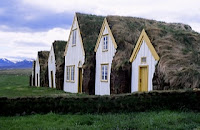Europe will be celebrating this anniversary all year, Jeff points out on his blog, Quid Plura, with scholarly symposia, pilgrimages to Charlemagne's cathedral at Aachen, an art installation of 500 Charlemagne statues in a public square, a new Aachen Bank card, an opera, and a comedy performance, "Karl and the White Elephant," among many other events.
I celebrated in a quieter way--by rereading some chapters from Sypeck's own fabulous biography, Becoming Charlemagne: Europe, Baghdad, and the Empires of A.D. 800, published by HarperCollins in 2006. This was one of the books that made me think I might want to write popular history myself.
Charlemagne's reign (768-814) overlaps with the beginning of the Viking Age (793), which is the reason I'm especially interested. Some scholars say his wars with the Saxons provoked the first Viking raids on the Continent; others that the power vacuum after his death gave the Vikings their opportunity.
Sypeck doesn't look north in Becoming Charlemagne, his interests are east and south, in Byzantium and Baghdad. Here you will learn, for example, about the great Islamic empire that stretched from Baghdad to Cordoba. You'll visit the City of Peace at daybreak, in one beautiful chapter: the monasteries where secret wine parties were held, the markets which sold every luxury, the circular walls and four grand gates, the green-domed mosque in the center.
"The warm humor is lacking among them; their bodies are large, their natures gross, their manners harsh, their understanding dull, and their tongues heavy. Their color is so excessively white that it passes from white to blue… Those of them who are furthest to the north are the most subject to stupidity, grossness, and brutishness."
And you'll read about Charlemagne's elephant, Abul Abaz, a gift from the caliph Harun al-Rashid (the caliph of The Arabian Nights).
"The first thousand miles were probably the worst," Sypeck writes. "Coming from Baghdad, the man known to Frankish annalists as Isaac the Jew passed through Jerusalem, crossed the Sinai, and journeyed along the Egyptian coast. …
"All caravans moved slowly, of course, but in this case the pace was even slower, because of one of Isaac's traveling companions, a lumbering ambassador from Baghdad who was vast in size, ravenous, and prone to wander… He needed around twenty gallons of water each day. He needed shade, and he rarely slept. Keeping Abul Abaz happy, and keeping him moving, was a job without end.
"The sun was harsh, the earth was cracked, and Isaac was in a dead zone between the culture of Baghdad and the comforts of home. Whatever reward awaited him for leading an elephant across 3,500 miles, it could not have been enough."
Sypeck laments, as do I, that everyone remembers Charlemagne's elephant--but no one thinks about poor Isaac, Charlemagne's ambassador. Is this what he'd agreed to when he signed on? Should he not, at least, have won undying fame for bringing Europe the first elephant it had seen since Hannibal's in 218 B.C.?
Modern writers have even replaced him with a hero more like themselves: A 19th-century Egyptian novel describes "the adventures of a Persian noble, not a Frankish Jew, who delivered a white elephant to Karl on behalf of Harun. Two modern children's books about Abul Abaz also eliminate Isaac"--these are C. Walter Hodges's The Emperor's Elephant (1975) and Judith Tarr's His Majesty's Elephant (1993). One makes the elephant's keeper a boy named Selim.
"Perhaps," Sypeck says, charitably, "modern storytellers have too little to work with, but it is sad that the world has no memory of Isaac and the details of his amazing five-year journey."
At a time when Viking ships were bearing down on British monasteries, when Charlemagne was crowned Holy Roman Emperor, when Baghdad was at its peak and Byzantium was teetering, a Frankish ambassador named Isaac the Jew was struggling to bring a white elephant from Baghdad to Aachen. He arrived in 802.
In 810, when Charlemagne marched north to face a fleet of 200 Viking ships then ravaging the coast of Frisia, he took his white elephant with him to terrify the enemy. Unfortunately, Abul Abaz died on the way.
Read more about Charlemagne--and order Jeff Sypeck's book--at http://www.quidplura.com. The carving of the elephant is from the "Charlemagne chess set," once thought to have been another gift of Harun al-Rashid, but now dated to the 11th century.
Join me again next week at nancymariebrown.blogspot.com for another adventure in Iceland or the medieval world.
















